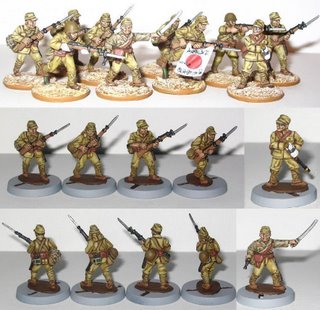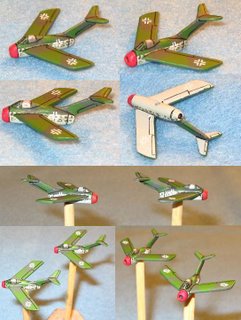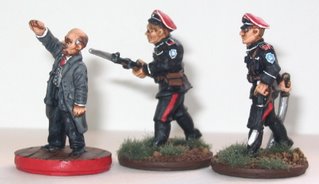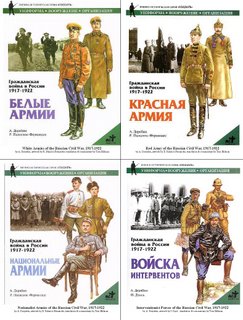 WWII PACIFIC WAR
WWII PACIFIC WARImperial Japanese Army
With the recently release of “Letters from Iwo Jima” I knew I had to add something from that period to show here. PacWar WWII, available from Brigade Games, makes an outstanding line of USMC and Japanese infantry initially seen in Issue #6. There are four sets of Japanese infantry packs (A-D) with two packs wearing helmets and the other two with soft hats. There is a command pack and LMG pack (LMG and three supporting crew as per the normal Japanese platoon OOB.) The Command pack has 6 assorted Officers/NCOs complete with samurai sword. The Infantry come 4 to a pack with soft hats and a mix of hat flaps and measure 25mm to their eyes; the Japanese soldier of WWII is shorter than his American counterpart and the figures demonstrate this difference very appropriately. The figures in the packs are very well proportioned and uniquely posed with plenty of realistic action. All of the figures were well cast with little flash and were easily and quickly prepared for painting. The IJA figures come with a varied array of field gear so that all of the figures completed to date are unique (one even has camouflage netting on his helmet, a very nice touch) and the detail/quality remains high.
While the Command and infantry wearing helmets are great, there is just something awesome about the figures wearing the cap flaps (2 in each pack.) The IJA infantry figs with the hat flaps fall into my “gotta have them ‘cause they’re too cool” category (like Vendel’s March Warden figures - reviewed in issue #7 of the HMG magazine.) There is just something that “strikes” me about these figures – the action in the figures combined with the way the flaps look on the hats makes me want to build coconut log defenses, assemble palm trees and game the WWII Pacific theater. They really look that good!
These figures represent the next phase in an ongoing project to produce figures and vehicles to replay the Pacific War campaigns. Support weapons are available as well as an artillery piece with the crew pending (I saw prototypes that are shirtless and look sharp!) There are plans to produce specialty figures every quarter – a John Wayne/Sands of Iwo Jima figure and a grizzled USMC sergeant with his stogie to name just two.
http://www.brigadegames.com/
(note: The figure with the flag does not come that way and was convertered by adding a piece of aluminum soda can folded to look like a flag. The written Japanese is taken from the Osprey MAA 432 Japanese Special Naval Landing Forces.)










